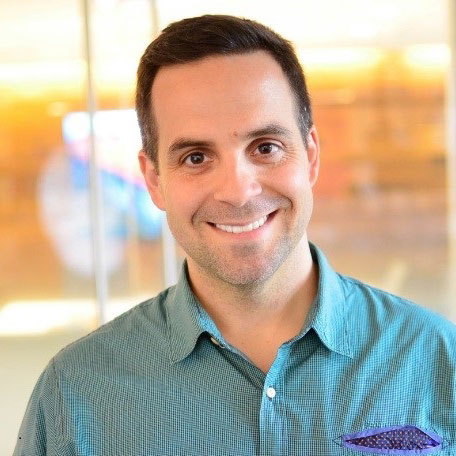USTA's Nicole Kankam on Evolving the Tennis Experience for Fans
How this year's U.S. Open was a showcase for balancing legacy and innovation
The U.S. Open is truly one of my favorite experiences to attend in New York City every year. From the nonstop action on the courts to the fantastic array of food, fun and dynamic hospitality—the overall experience is consistently truly spectacular. And this year, with the exciting story line of Serena Williams pulling together a string of inspiring wins in her final U.S. Open appearance, the spotlight and attention on the event were even brighter.
Based on this continued success, I decided to sit down with Nicole Kankam, managing director of pro tennis marketing of the United States Tennis Association (USTA). The USTA produces the event and describes itself as “the national governing body for the sport of tennis and the recognized leader in promoting and developing the sport’s growth on every level in the U.S.”
I’ve known Nicole for years, and she’s a true trailblazer in the sports marketing world. I think you’ll really enjoy this conversation.
Damian Bazadona: From a U.S. Open perspective, what does it mean to be a tennis fan? Are the majority of fans also tennis players? Or do you have a lot of fans who are primarily spectators and just love to watch the sport or individual players?
Nicole Kankam: While the U.S. Open definitely attracts what we call “entertainment seekers,” people who like to attend events and place a premium on the experiential, we also know that about half of the attendees play tennis, so it’s an audience that’s highly engaged in tennis participation. Most fans purchase their tickets prior to knowing the schedule of play, so the data shows they are attending because they are fans of the U.S. Open and the full experience it offers, or fans of tennis in general. However, this year, with Serena announcing her “evolution” from tennis, there was obviously a tremendous surge in interest in wanting to see her at what was expected to be her final Grand Slam event. But we’re also excited about the new crop of players that have emerged and are already generating interest and excitement around our sport.
How do you grow your fan base or expand that definition of what makes a tennis fan?
One of our key priorities for the U.S. Open is to expand beyond the two weeks of the main draw. We did this by creating U.S. Open Fan Week, thus hosting a three-week tennis and entertainment festival. Returning after a hiatus due to the pandemic, U.S. Open Fan Week provided a host of free activities and content on the grounds of the USTA Billie Jean King National Tennis Center. The goal is to introduce new fans to the U.S. Open and the sport of tennis. Throughout the week, there was no shortage of content, including the qualifying tournament, where future stars compete for the final slots in the U.S. Open main draw, up-close access to top player practices, a marquis legends match, a free concert by Joe Jonas’ band DNCE, and our first-ever U.S. Open food festival. While access to the grounds was free, we created Fan Access Pass as a mechanism to enhance a fan’s experience with certain gated activities. This also allowed us to capture fan data to foster engagement post-event and entice them to return next year.
I know a big part of your efforts were also centered on showcasing inclusiveness. Tell me more about that.
As an extension of our #BeOpen campaign, now in its third year showcasing inclusiveness and support for diverse communities, we’ve developed programming and events that create space for these communities to be seen at the U.S. Open. Some examples from this year’s U.S. Open include HBCU Live at the U.S. Open, celebrating the rich history and culture of historically Black colleges and universities and their connection to tennis; Open Pride Day, honoring the LGBTQ+ community on-site and across our channels; and Be Open Armory Off-Site—a partnership with the Armory Show to highlight artists from underrepresented backgrounds with a display of unique sculptures on the grounds of the U.S. Open.
In addition, the USTA’s mission is about growing tennis and making it look like America. And with tennis participation seeing tremendous growth, adding more than 5 million players over the last two years, we see the U.S. Open as another opportunity to inspire a love for the sport. An integral part of that strategy is leveraging U.S. Open attendee data to draw them into the broader USTA ecosystem and funnel them toward play opportunities to keep them engaged in the sport.
How did the pandemic change how you engaged with your fans? For example, I saw 2020 was the first U.S. Open without spectators in the tournament’s history. How did you approach developing new, creative ways to keep your fans engaged without one of the biggest touch points you have with your community—the live experience?
Like everyone else in the sports and entertainment business, 2020 was a tremendously challenging year. The U.S. Open, perhaps even more than other events, thrives on the in-person experience because we like to think that part of what our fans enjoy goes beyond the on-court experience. From the premium culinary offerings, to all the engaging activations our sponsors bring to life, to the upscale shopping experience, it’s a true festival-like atmosphere. But in addition to that, the U.S. Open is a global event, broadcast in 200+ countries with a digital presence that is more international in reach during our tournament. So in 2020, once we determined we would host the tournament without fans, we focused on engaging that global audience with fan activations that brought the fan more into the in-stadium experience, including the U.S. Open Fan Cam that we featured on the screens around the U.S. Open court. We also created a virtual player box to help recreate the experience of having the coaches and entourage cheer on their players since they couldn’t be there live. And we created a new merchandise product offering, the at-home suite, which was a curated box of all the U.S. Open essentials, including the glasses for our signature beverage, the Grey Goose Honey Deuce, with the recipe so fans could make at home. Now that we’re back to fans on-site, the at-home suite is still an ongoing key part of our merchandise offering.
Not always a part of mainstream conversation, tennis has become a bit more a part of the zeitgeist in recent years. What do you think has changed that has brought more attention to the world of tennis? Has the celebrity status of certain tennis players impacted that?
Serena and Venus Williams have undoubtedly changed the landscape of tennis, not just with their amazing talent on the court but with their interests beyond tennis. They are cultural icons who have been large drivers of the expanding interest and presence of tennis in popular culture. They have also inspired other tennis players, like Coco Gauff and Naomi Osaka and others, who are emerging champions on the court but are also thinking about their impact and influence beyond tennis. And with Roger Federer also announcing his retirement, it’s evident how he has changed the game on the men’s side in being a world-class athlete as well as a global ambassador for the sport.
But beyond these world-renowned superstars, each year the U.S. Open is an event where the convergence of sports, celebrity and entertainment attracts attention from all corners of culture. Leveraging our own channels, as well as expanding the storytelling beyond sports media, is an area where our communications and social teams have been very successful. This year’s event in particular was our most successful event, from record sales and attendance to site traffic and social engagement. So we will look to continue to leverage the cultural relevance, even as attention shifts to a new crop of superstars.
There is a truly unique culture around tennis and many time-honored traditions like the quiet before the serve, the dress code, etc. How do you nurture the old, while welcoming the new? How do you navigate growth?
We do seek to strike a balance in honoring the history and tradition of our sport while being open to embracing innovations that help bring in new fans. We are very intentional about connecting to the distinct persona of New York City through branding and marketing efforts. This year’s campaign, “Spectacular Awaits,” was created as a nod to the U.S. Open being a sports and entertainment spectacle unlike any other. It essentially informed all aspects of the event and our desire to deliver a spectacular experience for fans both on-site and watching and following around the world, from advertising and promotional efforts, to on-site branding and LED screens, to social media engagement and beyond. All of our messaging, even how we discussed plans internally, focused on this singular idea and created a framework for teams across the planning spectrum to innovate and ultimately deliver on the positioning. It is a platform that can have longevity as we look to navigate growth for the future.
If 10 years from now you and I were to sit down again for this interview, what do you think would be the biggest changes to the world of tennis from where we sit today?
We have lived in an unprecedented era of tennis where a few players have dominated the tennis conversation for quite some time, so I imagine over the next several years we will see a number of stars emerge who will capture the attention of old and new fans alike. How and when fans make the decision to attend the U.S. Open, what they expect from an engagement perspective on-site, and how they consume the product around the world will likely shift and evolve, but in 10 years I expect we will continue to be agile and willing enough to respond to those changing dynamics.
Building Passionate Communities is a regular interview series where Damian Bazadona, president and founder of Situation Group, sits down with extraordinary leaders at organizations that have paved the way in both cultivating passionate communities and driving them to meaningful action. For more about Building Passionate Communities, or to be considered for the series, please get in touch.










